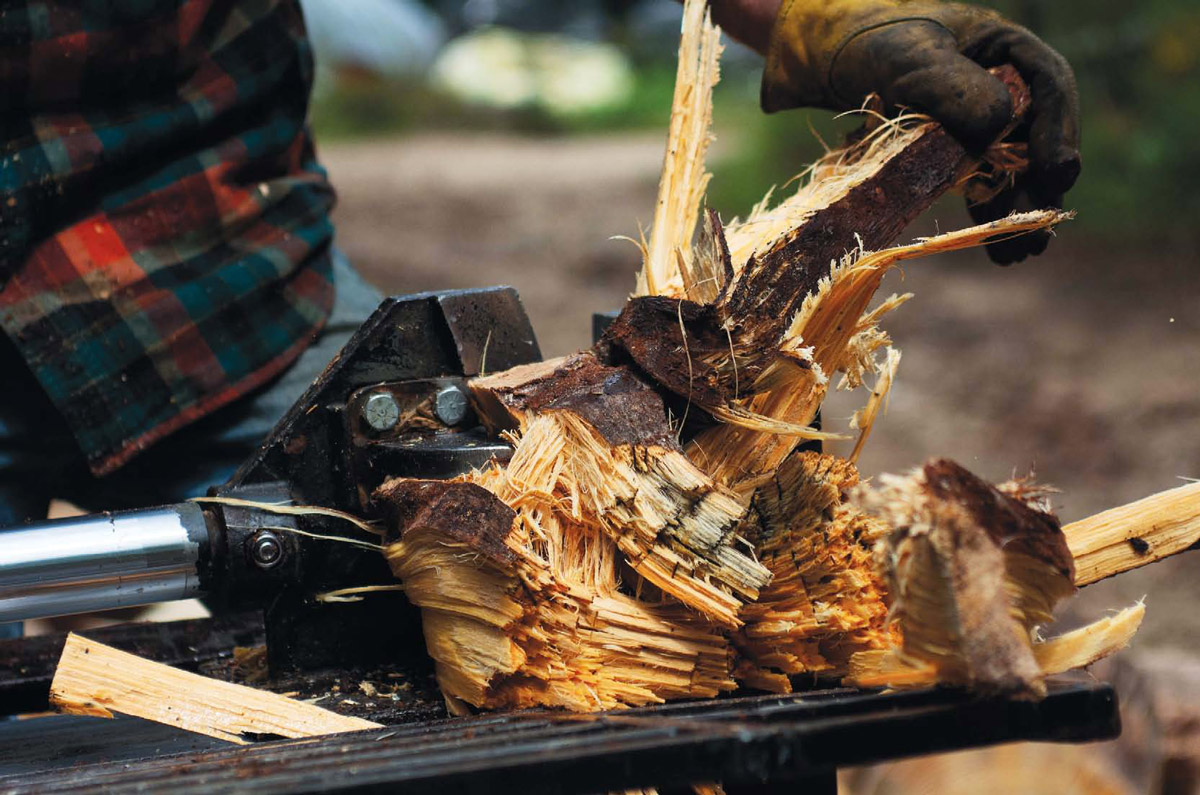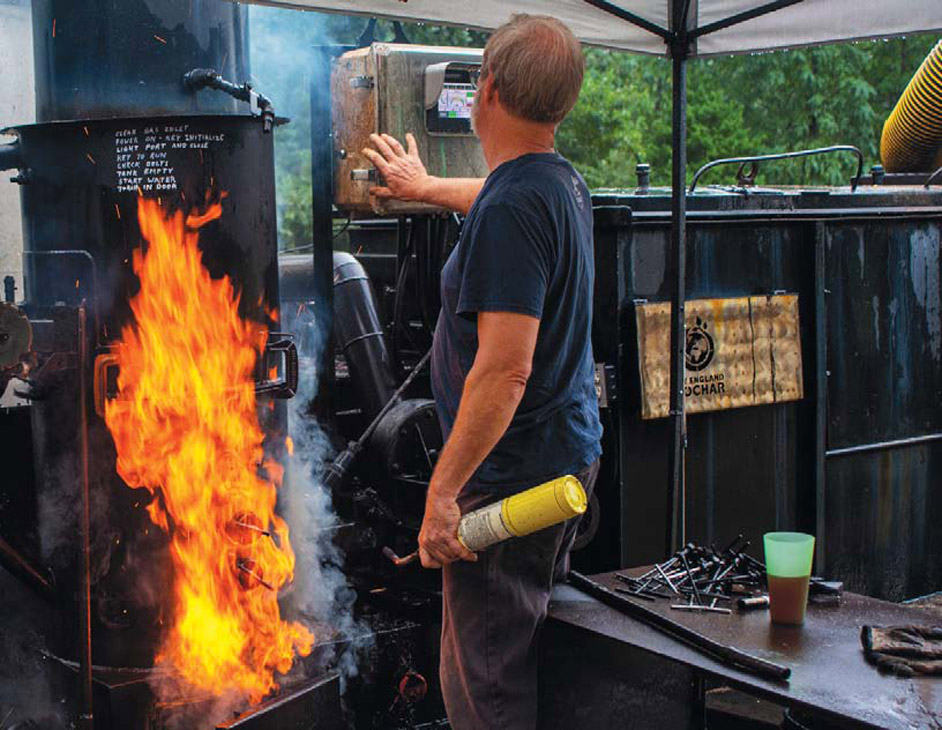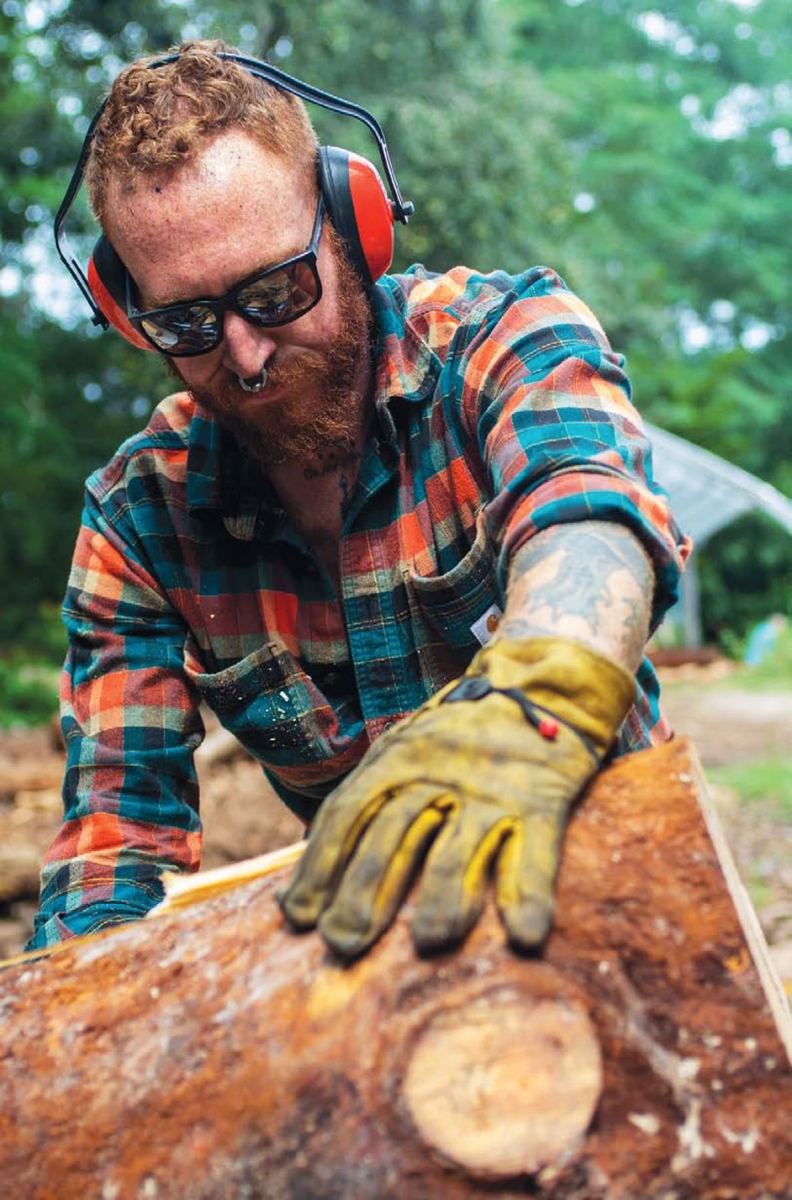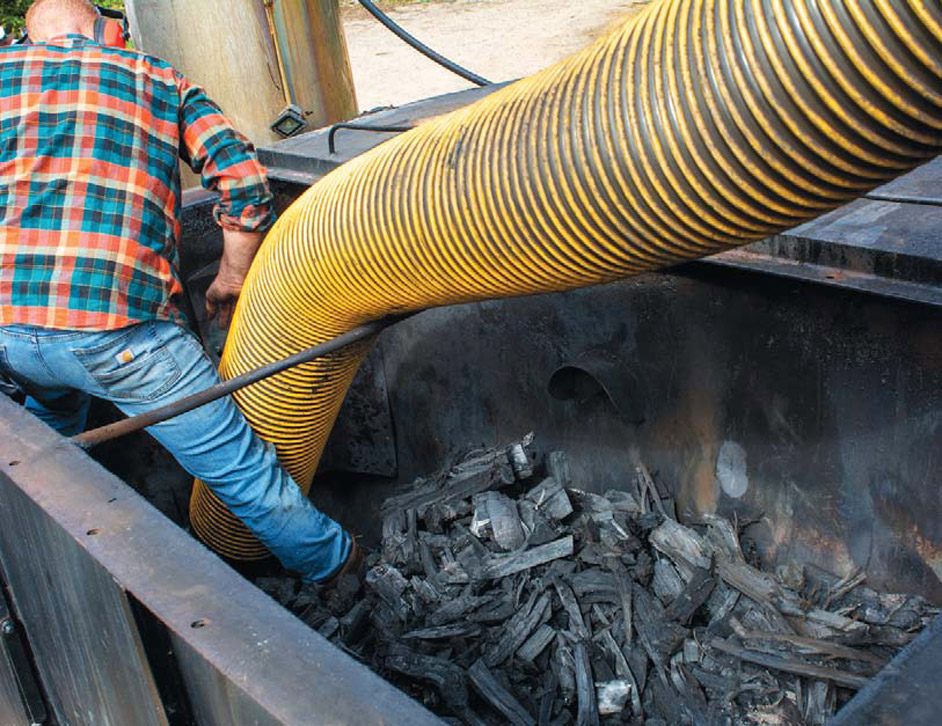Edible Cape Cod
Turning Sand to Soil: Eastham's New England BioChar
Photo by John Greiner Ferris
A big part of making biochar is collecting and splitting waste wood for the biomass. New England BioChar saves local landscapers and tree surgeons the cost of hauling waste wood off-Cape.
Photo by John Greiner Ferris
A detail of the retort. The parts to Wells’s retort are almost all designed by him on a CAD system that he taught himself.
Photo by John Greiner Ferris
Bob Wells ignites the wood chips in the combustion chamber to start pyrolysis.
Photo by John Greiner Ferris
Eric Cameron clears the chute that directs the finished product into a holding bag.
Photo by John Greiner Ferris
Bob Wells (l) and Eric Cameron lock down the airtight compartment where the biomass is heated.
Photo by John Greiner Ferris
Eric Cameron splitting the wood to be placed in the retort.
Photo by John Greiner Ferris
The lighting procedure for the retort.
Photo by John Greiner Ferris
Bob Wells monitors the retort.
Photo by John Greiner Ferris
Eric Cameron handles the chute that removes the finished product
Photo by John Greiner Ferris
The airtight chamber where the biomass is heated up to 1000° F
Photo by John Greiner Ferris
Bob Wells checks the temperature of one of his compost piles.
Photo by John Greiner Ferris
Bob Wells holds two samples of Cape Cod soil, one without biochar (l), and one with biochar (r).
Photo by John Greiner Ferris
The finished product. Biochar is extremly lightwight and sounds like pieces of glass when pieces knock together.













